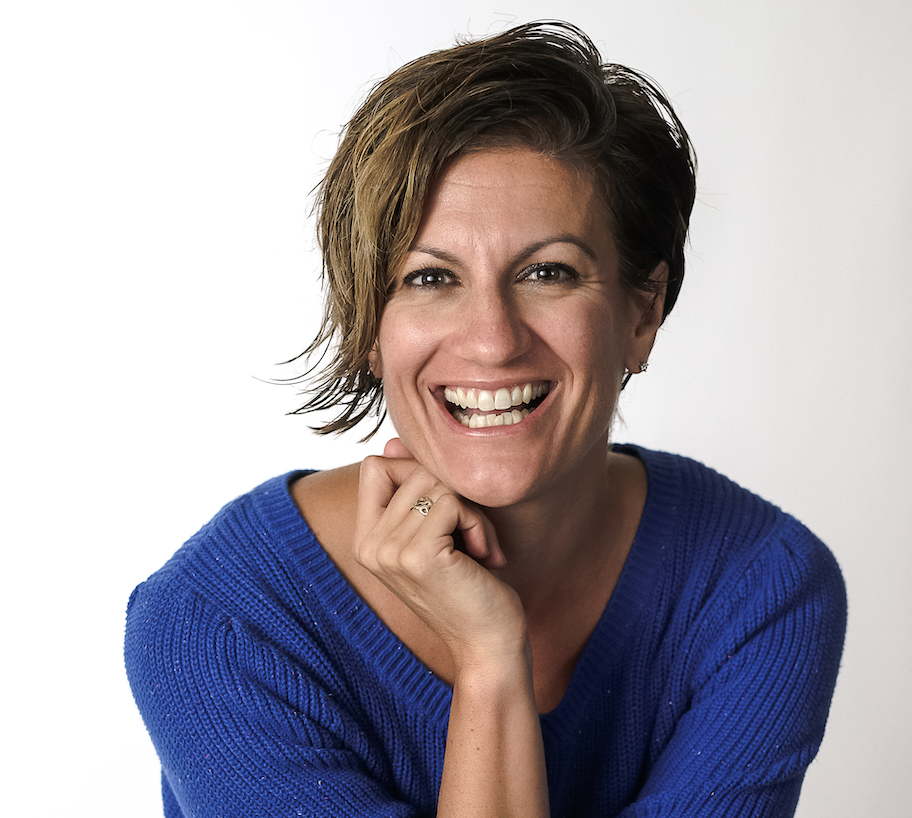I really struggle when someone asks me, “What does UDL look like?” It is not because I don’t know the answer. It’s because I don’t know what it looks like for YOU. As the brilliant Dr. Liz Berquist explains in UDL: Moving from Exploration to Integration,
“Because the implementation of UDL is variable and unique - in this sense it is a model of UDL itself. UDL looks different in every learning environment, just as it looks different in every school, district, and state. Although there are patterns to be found in this variability, there is no right way to implement the UDL framework.”
Universal Design for Learning (UDL) is not just a framework for curriculum design. It is a belief that all students are capable of learning and that instructional methods, when implemented intentionally, can help all students succeed.
So, maybe the better question to ask is, “What are the patterns of UDL?”
To put it simply, when teachers implement UDL, students have choices. And those choices allow all students to access rigorous, standards-based curriculum. What kind of choices? There are four interrelated components of a UDL curriculum and when implemented well, students have choice in all four areas. First, let’s unpack those four areas.
Four Components of a UDL Curriculum
Goals
As CAST notes, “within the UDL framework, goals themselves are articulated in a way that acknowledges learner variability and differentiates goals from means.” Oftentimes, teachers create goals that include embedded methods. For example, “All students will learn how to write arguments by giving a persuasive speech about which new club belongs in our school.” When teachers can step back and see the goal, “Write arguments,” they could provide numerous choices for students to achieve that goal that doesn’t require all students to stand up in class and read a speech about a club. Ask yourself this: Is the standard actually requiring that students all do the exact same thing in the same way? (The answer is always no!)
Methods
Methods are the instructional decisions, approaches, procedures, or routines that expert teachers use to accelerate or enhance learning. Oftentimes, however, all students are expected to follow the same procedures in how they learn or express their knowledge (read a short blog on UDL and the Death of Lecturing).
Materials
Materials are usually seen as the media used to present learning content and what the learner uses to demonstrate knowledge, but oftentimes, the same materials are provided to all students. I call this “packet syndrome.” CAST calls it, “one-size-fits-all,” teaching and learning.
Assessments
Assessments are an expression of student learning. When designing assessments, it’s critical that teachers consider exactly what students need to know and do and then strip away any specific methods that have been tied to the goal. Essentially, when reviewing your standards, you will ask yourself, “How will students provide evidence that they met the goal? Can they have choices?”
Translating the UDL Principles into Choice
Now that you have a better sense of the types of choices you’re looking for, you may still be wondering how each of the principles of UDL translates into choices for students. The following may be helpful.
Engagement
Students are engaged in authentic, relevant learning opportunities.
What does this look like?
- There is a clear culture that values creativity, risk-taking, growth mindset and the fact that there are many ways to arrive at the same destination but that the journey is different for everyone.
- A daily agenda or checklist is provided to help students monitor their progress.
- Classroom arrangement is set up for minimal distractions.
- Students are allowed to work collaboratively. Teachers may facilitate Paideia seminars, Socratic circles, etc…
- Engaging choices for assignments: simulations, mock interviews, poetry slams, blogs, debates, etc… are offered regularly if not daily.
- Students have an opportunity to personalize their goals. For example, if students are writing arguments, they are all writing about topics of interest to them, exploring the resources that work for them, and express what they know with an authentic product.
- Rich, mastery-oriented feedback is provided from teachers and peers consistently – including feedback from students to teachers so they can become an integral part of the design and delivery of their own instruction.
- There are many opportunities for students to self-assess their progress, make changes if necessary, and get feedback on how to continue to work toward their goals so they can make better decisions about methods and materials in the future.
- Teachers are monitoring the classroom to keep students on task, helping them stay organized and prevent frustration, but students also collaborate to push each other to continue to apply effort and persistence.
Representation
Content and skills are presented in multiple ways and students have a choice about which methods and materials to use to reach the goal.
What does this look like?
- Learning objectives or standards are posted and visible to students so they know what the ultimate goal is. Teacher explains the standard to students and its rationale. All students could tell an observer the goal of the lesson.
- More than one presentation method is apparent and students are accessing different experiences: lecture, reading text, audio, video, reciprocal teaching. If there is one predominant presentation method, there are additional representations embedded (i.e, teachers read directions while projecting them with a document camera, or students watch a video with closed captioning.)
- Teachers pre-teach vocabulary and activate prior knowledge. May use Frayer models, vocabulary tables, images etc…
- Teachers provide opportunities or stations where students can learn information on their own (i.e, read a text, view a video, listen to audio, work in a collaborative group, etc…)
- Teachers use Powerpoint, Prezi, Glogster, the online textbook, Youtube, or other presentation software to present content. This integrates visuals, audio, and text.
- Teacher uses diagrams, charts, and images throughout the lesson. Does not only rely on text.
- Allows students to access technology (IPads, Nooks, etc…) so they can customize the display of information.
- As students read or do research, teachers remind them to highlight patterns, critical features, and/or big ideas. Not just reading text without scaffolds.
- Model note-taking while presenting information (i.e, Cornell notes or slotted notes).
- Teachers use some sort of a system like Google Classroom or a Learning Management System (LMS) like Canvas to display and deliver classroom content and activities so that it is available both in class and out of class so that students are able to access the information whenever they need or want it. This access will be available to parents as well.
Expression
Students are provided with choice and/or scaffolding when expressing their knowledge in formative and summative assessments.
What does this look like?
- Not all students are completing the same assessments in the same way (but it’s because they made the decision – not just the teacher). For example, if all students are asked to solve an equation, students may have the choice of using math reference sheets, manipulatives, calculators, scratch paper, in small groups, with a partner, etc….If students are working toward a written task, they may have the choice of writing on paper, using a device, accessing a graphic organizer, exemplar, rubric, etc…
- When teaching specific methods, such as solving an algebraic equation or writing an essay, teacher provides the following: work exemplars, rubrics, frequent mastery-oriented feedback, and all necessary resources and materials necessary to complete assignment (i.e, textbooks, pencils, paper.) but not all students have to use the same methods or materials. It’s up to them to self-reflect and create strategies that will allow them to meet the goal.
- Teachers may offer engaging choices for assessments, so students can express their knowledge or skills in many different ways: simulations, mock interviews, poetry slams, blogs, debates, essays, multimedia presentations, etc…
- Teachers use think-pair-share, private think time, partner tasks, exit tickets or other dipsticking methods so all students are assessed daily.
- Teachers have multiple methods of assessing student knowledge when working toward content standards. May be a combination of the following: debates, Socratic circles, essays, objective tests, projects, skits, lab reports, journals, etc…
UDL in Action
Check out the following videos and consider how these teachers provide students with choices by using the UDL Guidelines. Remember, you don’t have to do what these teachers do to implement UDL, but you will see that there are patterns between them.
- Crystal Morey, on the Teaching Channel, uses “Menus” to provide students with personalized opportunities to build their math understanding (MS math)
- Sean McComb, a national teacher of the year, uses the workshop model to implement UDL and foster personalized learning (HS ELA)
In UDL-topia, students have choices in goals, methods, materials and assessments, and these choices are both engaging and accessible. But early UDL implementation may be only focused on providing choices in one or more areas, so when you’re looking for the UDL principles in action, you may see glimpses in a class that is not yet universally designed for all learners to be able to personalize their learning experience in meaningful ways. So, how do you move from point A to point B? As with all things UDL, you need to personalize that process for you and your students, and that starts with asking them for their feedback.
In UDL, student voice is optimized. Strong UDL practice starts with collaborating with students to ask students what they need to be successful. David Rose once said,
“Teaching, at its core, is emotional work.”
I truly believe that students know what they need to be successful and that everything that they need to follow their passion and achieve their dreams is inside of them. We as educators have a tremendous opportunity to learn more about our teaching from our students if we are open and ask the right questions and listen to their answers.
So, here is my official answer, if all students are working toward the same rigorous standards but making choices that allow them to honor their strengths, challenge themselves and follow their passions, then that’s what UDL looks like.
Dive deeper into UDL. Explore our range of online courses, all universally designed.
Editor's Note: This post has been updated from its original publication.




